11 Best Robotic Pool
Cleaners 202511 Best Robotic Pool
Cleaners 2025
Cleaners 2025
Stop Wasting Time & Money on Pool Care
Our Experts Found Your Perfect Solution
Meet Our 2025 Champions
Cleaners to Find Your Perfect, Hands-Free Solution for a Sparkling Pool.
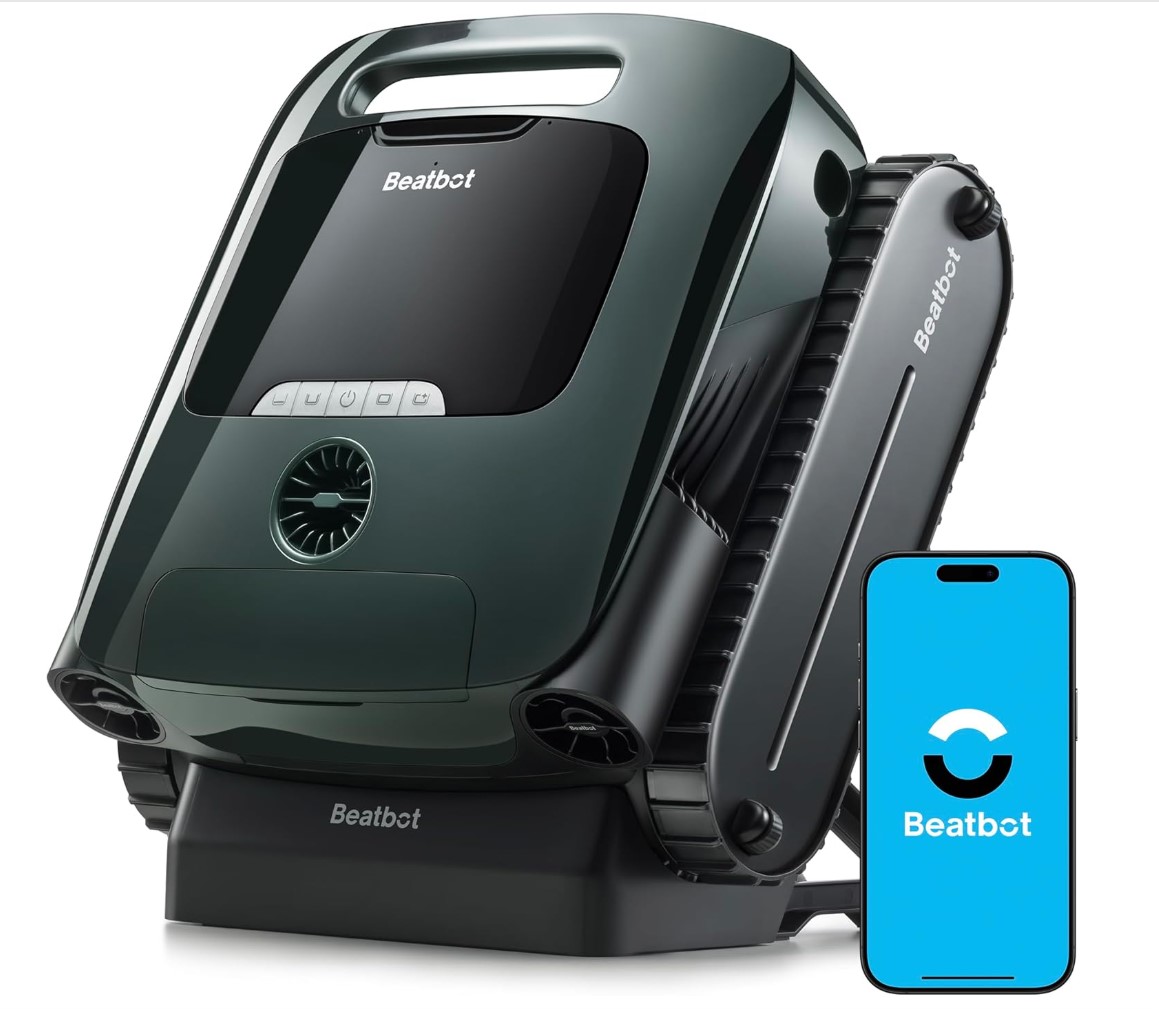
BeatBot AquaSense 2 Pro
"Master Every Pool Zone! Surface Skimming, Wall Scaling & Water Clarifying from this 5-in-1 Intelligent Powerhouse."
Key Features:
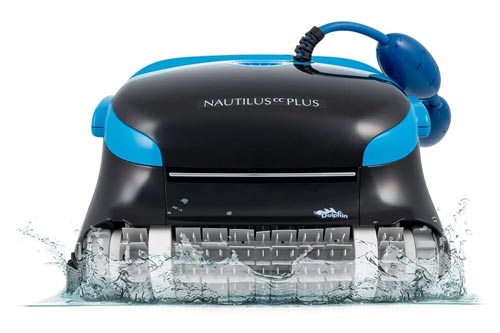
Dolphin Nautilus CC Plus Wi-Fi
"The Proven All-Rounder, Making Reliable Cleaning & Smart Scheduling Easy."
Key Features:
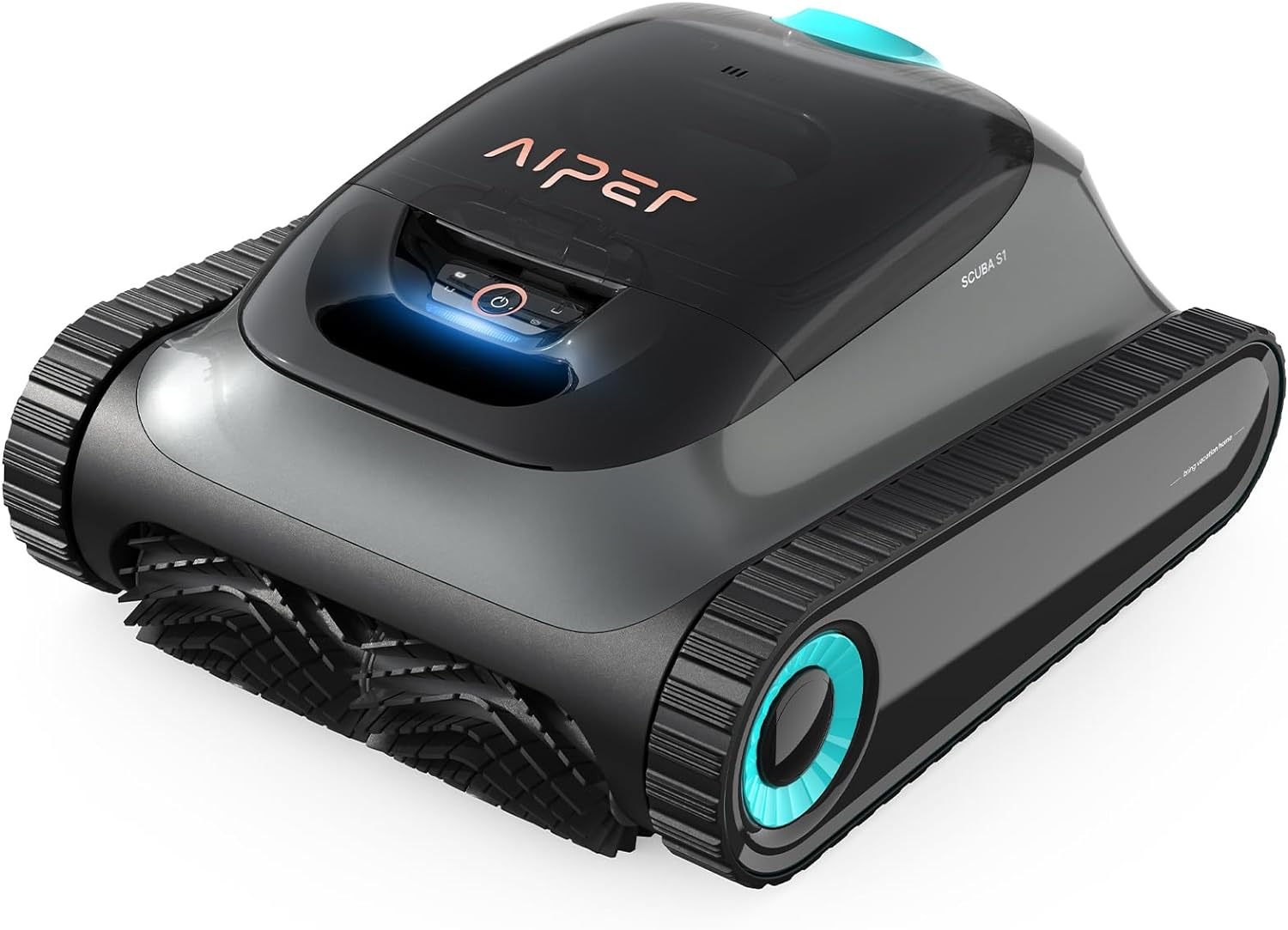
AIPER Scuba S1 Cordless
"Cut the Cord, Not the Clean! True Pool Freedom Has Arrived."
Key Features:
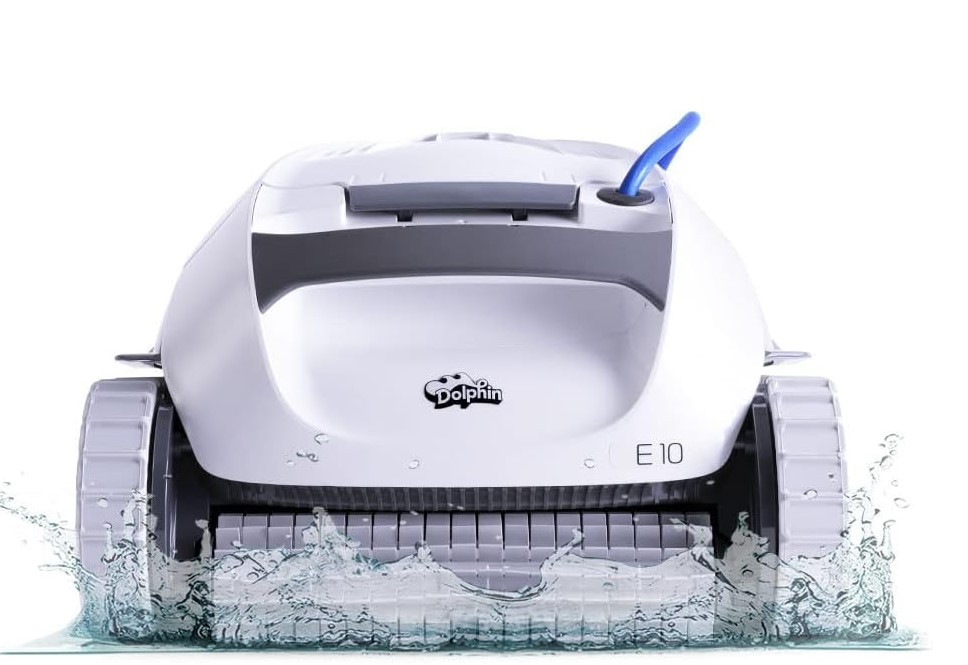
Dolphin E10 (2025 Model)
"Simple, Effective Floor Cleaning That Won't Break the Bank."
Key Features:
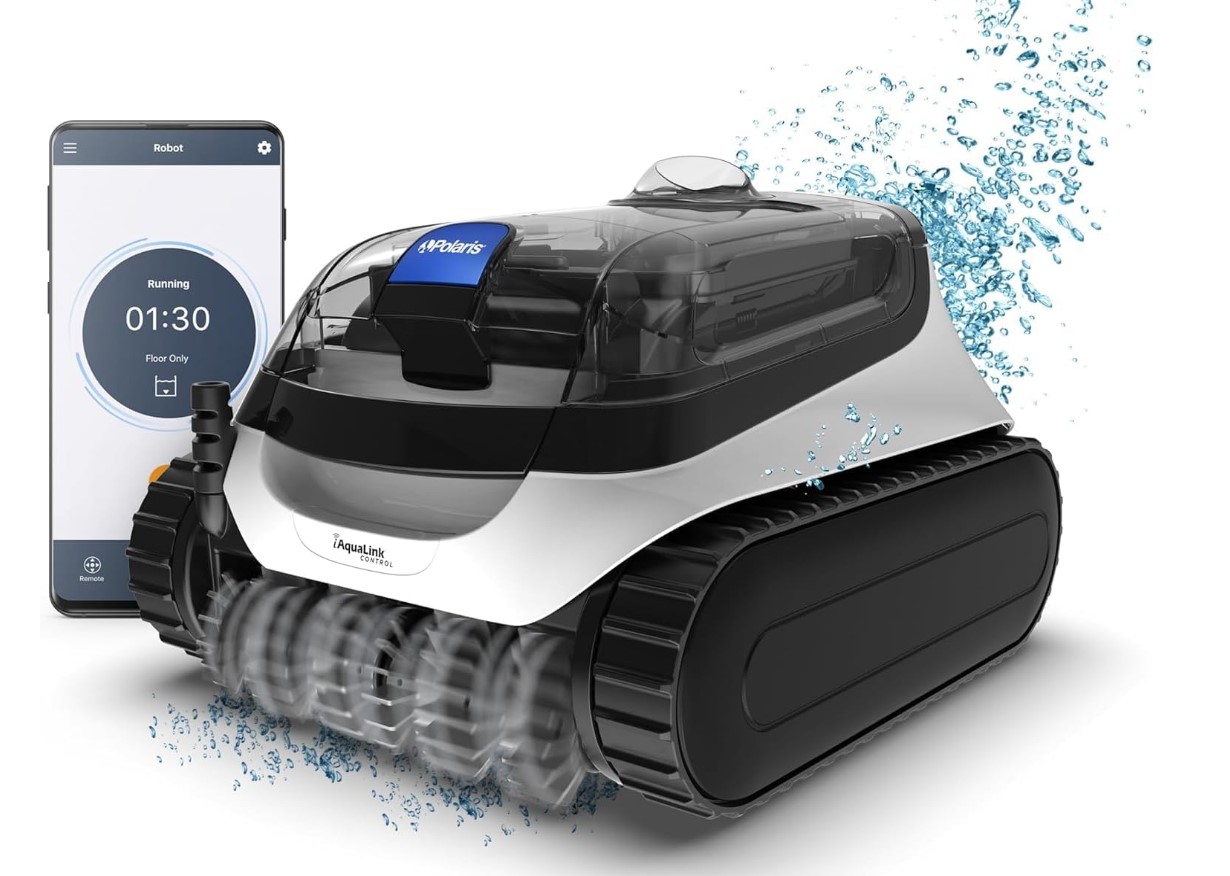
Polaris PCX 868 iQ Smart Robotic
"Total Pool Control From Your Phone, Delivering Intelligent Cleaning Performance."
Key Features:
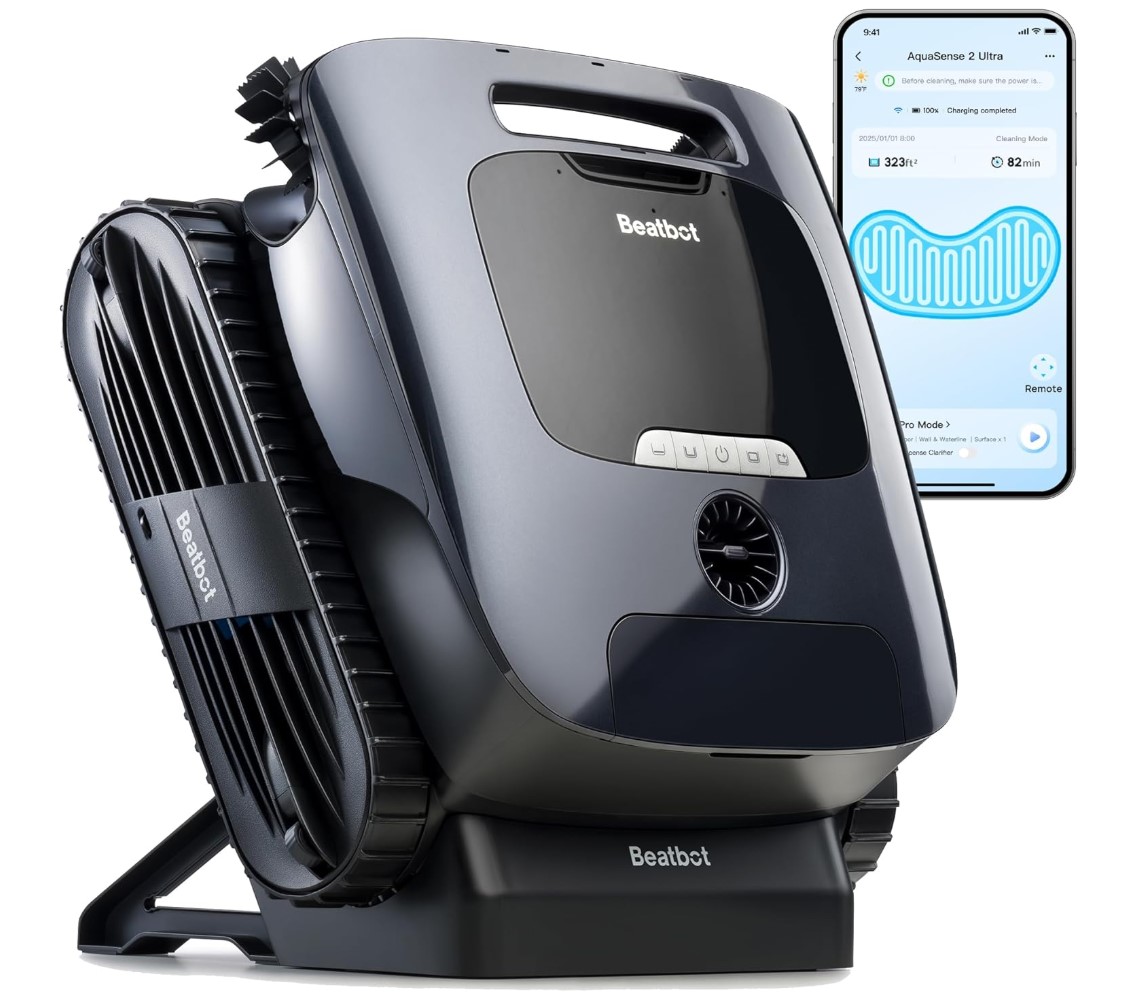
BeatBot AquaSense 2 Ultra
"Conquer Expansive Pools with Unrivaled AI Power & Endurance."
Key Features:
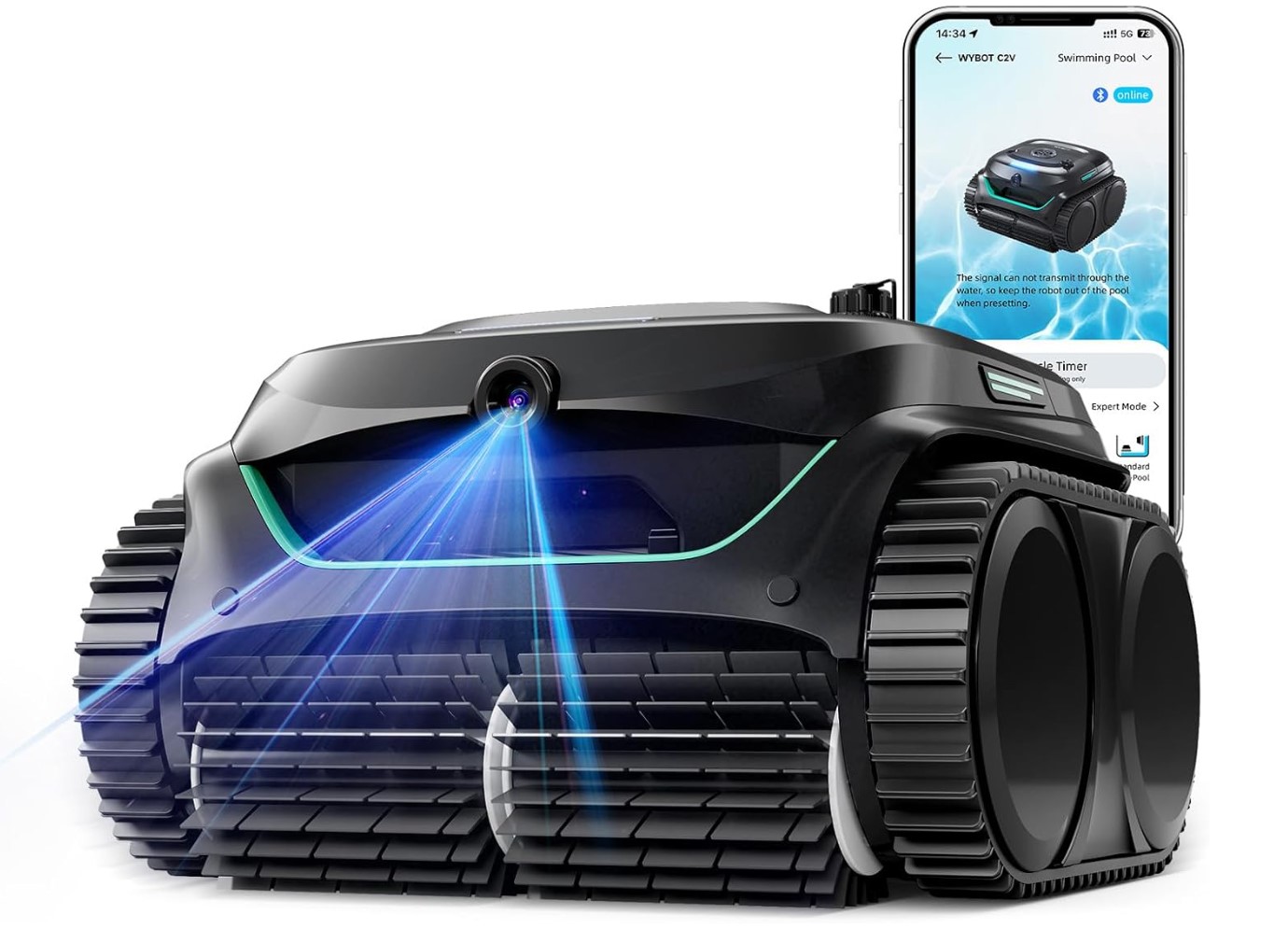
WYBOT C2 Vision AI Camera Cordless
"Smart Vision for a Spotless Pool, AI Takes Cordless Cleaning to the Next Level."
Key Features:
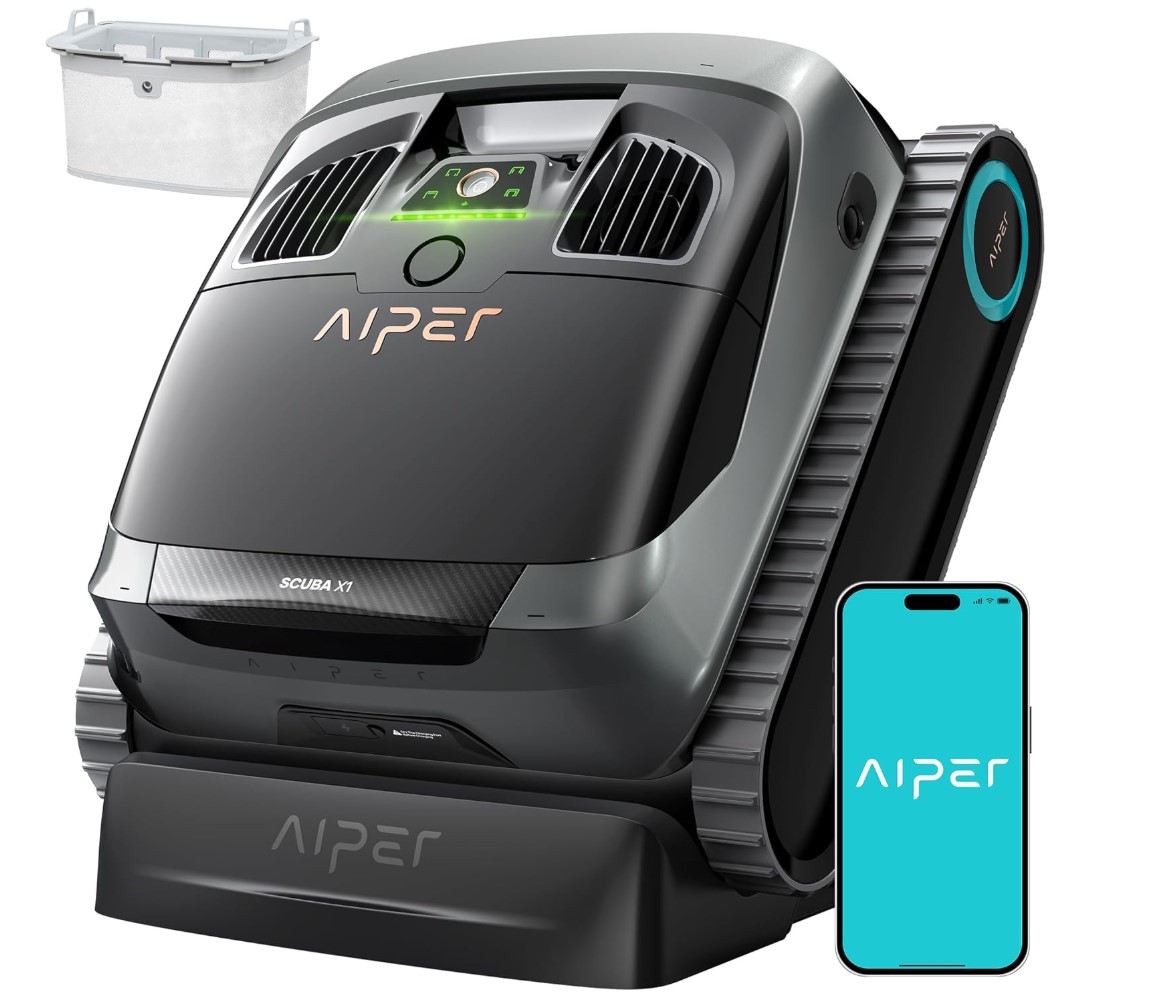
AIPER Scuba X1 Cordless
"Experience Superior Filtration & Waterline Scrubbing, All Unplugged."
Key Features:
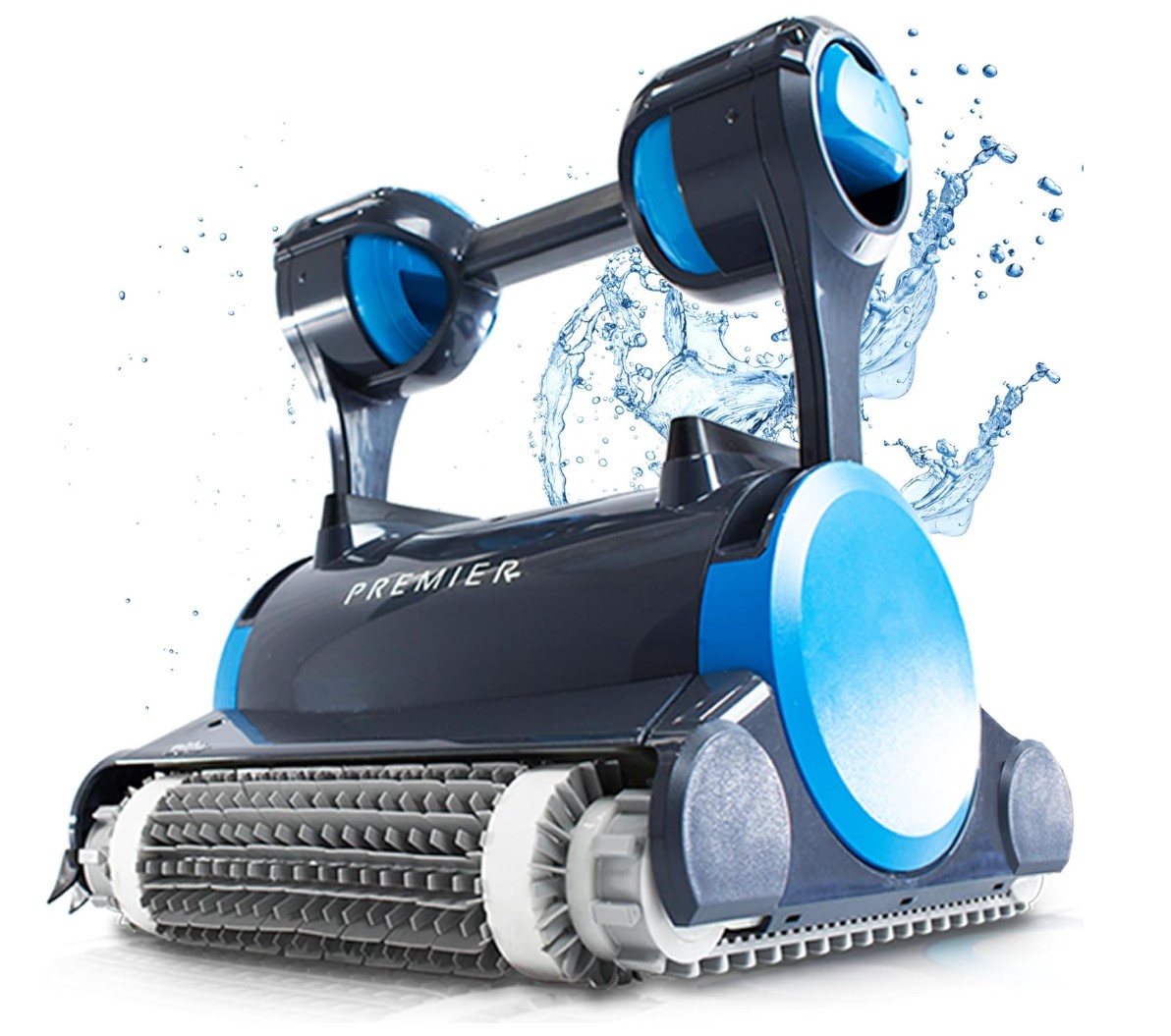
Dolphin Premier
"Tackle Any Debris, From Fine Silt to Large Leaves, with Ease!"
Key Features:
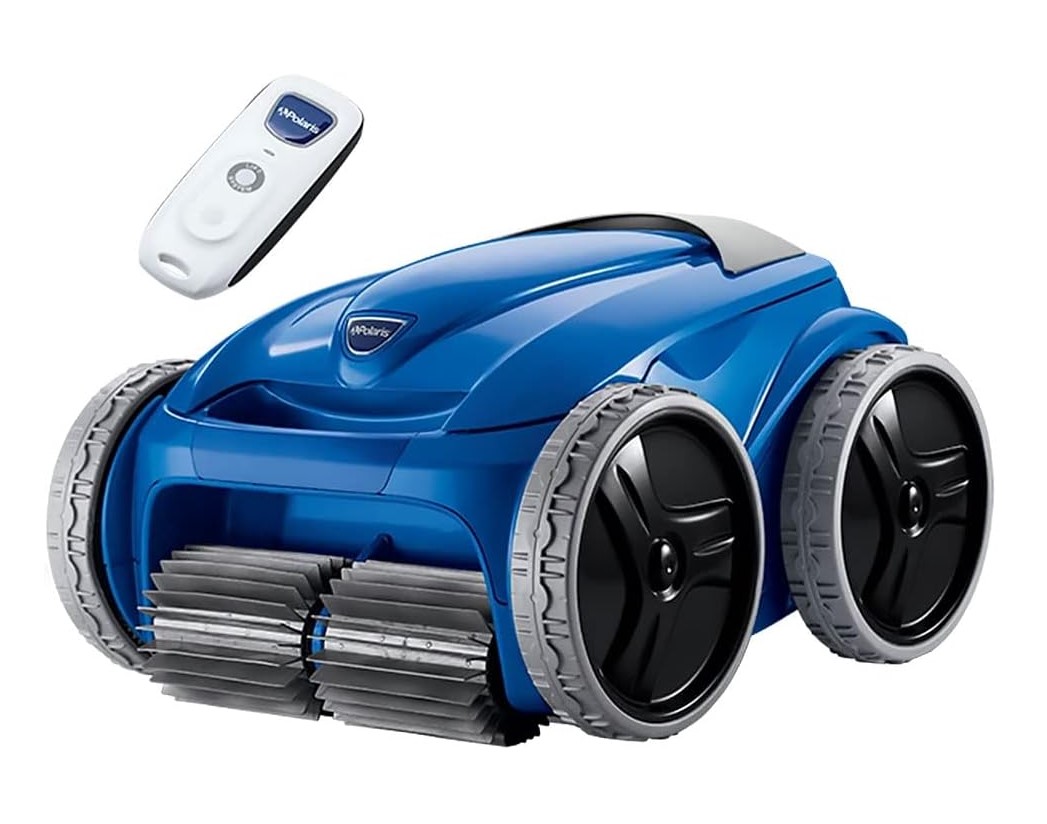
Polaris 9550 Sport Robotic
"Relentless Cleaning Force, Built Tough for Demanding Pools."
Key Features:
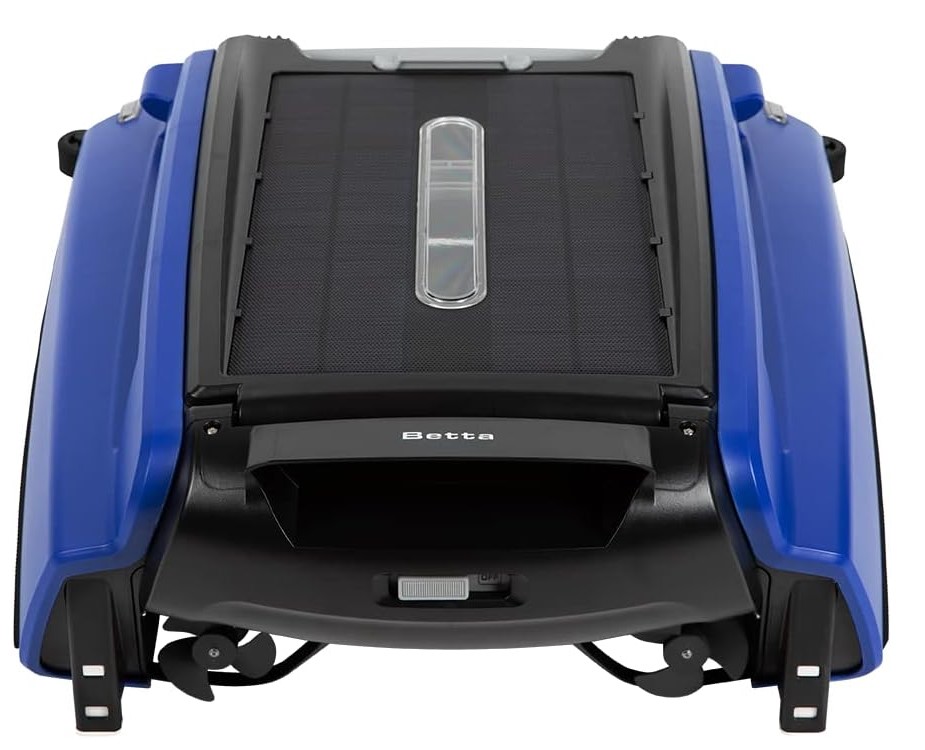
Betta SE Solar Powered Pool Skimmer
"Effortless, Sun-Powered Cleaning for a Debris-Free Pool Surface."
Key Features:
{{PRODUCT_NAME}}
"{{TAGLINE}}"
Key Features:
Complete Comparison Chart
Compare all top-rated robotic pool cleaners side-by-side to find your perfect match
| Feature | BeatBot AquaSense 2 Pro | Dolphin Nautilus CC Plus Wi-Fi | AIPER Scuba S1 Cordless | Dolphin E10 (2025 Model) | Polaris PCX 868 iQ Smart Robotic | BeatBot AquaSense 2 Ultra | WYBOT C2 Vision AI Camera Cordless | AIPER Scuba X1 Cordless | Dolphin Premier | Polaris 9550 Sport Robotic | Betta SE Solar Powered Pool Skimmer |
|---|---|---|---|---|---|---|---|---|---|---|---|
| Product |  |  |  |  |  |  |  |  |  |  |  |
| Our Rating | (4.9/5.0) | (4.7/5.0) | (4.5/5.0) | (4.3/5.0) | (4.6/5.0) | (5/5.0) | (4.3/5.0) | (4.6/5.0) | (4.6/5.0) | (4.4/5.0) | (5/5.0) |
| Award Category | BEST OF THE BEST | BEST OVERALL | BEST CORDLESS | BEST ABOVE-GROUND | TOP SMART-FEATURES | BEST LARGE-POOLS | BEST AI-NAVIGATION | PREMIUM CORDLESS | BEST FILTRATION | PROVEN POWERHOUSE | BEST SURFACE-SKIMMER |
| Ideal Pool Type(s) | In-Ground (<50ft) | In-Ground (<50ft) | In/Above-Ground | Above-Ground (<30ft) | In-Ground (<50ft) | All In-Ground (<3444sf) | In-Ground (<50ft) | In/Above-Ground | In-Ground (<50ft) | In-Ground (<50ft) | All Pool Types |
| Cleaning Focus | F/W/WL/S | F/W | F/W | F Only | F/W/WL | F/W/WL/S | F/W | F/W | F/W | F/W | S Only |
| Filter System | Dual-Layer (150μm+250μm) | Fine Cartridge | 180μm Fine Basket | Fine Cartridge | Large Canister | Dual-Layer (150μm+250μm) | Dual-Layer (180μm+10μm) | MicroMesh™ (3μm+180μm) | Multi-Media™ | Large Canister | Fine Mesh (200μm) |
| Cordless / Max Runtime | Yes / 10hr Surface | No | Yes / 150 min | No | No | Yes / 10hr Surface | Yes / 180 min | Yes / 180 min | No | No | Solar / 30+ hrs |
| Key Navigation Tech | HybridSense™ AI | CleverClean™ | WavePath™ 2.0 | CleverClean™ | iAquaLink App | HybridSense™ AI | AI Vision Camera | OmniSense+™ | CleverClean™ | ActivMotion® | UV Resistant Sensors |
| Waterline Cleaning | Dedicated Feature | No | Partial | No | Yes | Dedicated Feature | Yes | Dedicated Feature | Yes | Yes | No |
| Key Standout | 5-in-1 AI Cleaning | Reliable All-Rounder | Simple Cordless Freedom | Top AG Value | Full App Control | Max Coverage AI | AI Dirt Detection | Ultra-Fine Filtration | Any Debris Champ | Vortex Vacuum Power | Eco Solar Power |
| Price Guide | $$$$ | $$ | $$ | $ | $$$ | $$$$ | $$ | $$$ | $$$ | $$$ | $ |
| View Full Review | Read Review | Read Review | Read Review | Read Review | Read Review | Read Review | Read Review | Read Review | Read Review | Read Review | Read Review |
| Check Price | Check Price | Check Price | Check Price | Check Price | Check Price | Check Price | Check Price | Check Price | Check Price | Check Price | Check Price |
Swipe horizontally to see all products
Decoding Your Perfect Pool Robot
FactBench's comprehensive 2025 guide to finding your ideal robotic pool cleaner
Your Complete Guide to Pool Robot Selection
Choosing the right robotic pool cleaner can feel like navigating a high-tech maze, but it doesn't have to be. This comprehensive guide is designed to simplify your decision, breaking down the essential features and considerations. We'll help you understand what truly matters for your specific pool and needs, empowering you to select a robotic cleaner that will deliver sparkling results and effortless maintenance for years to come.
Matching Your Robot to Your Pool
Before you even look at a robot's features, the first crucial step is understanding your pool's specific characteristics. Not all robotic cleaners are created equal, and a model that excels in one pool might struggle in another.
In-Ground vs. Above-Ground Pools
This is the most fundamental distinction.
In-Ground Pools: These pools often have more varied shapes, depths (including deep ends), and surface materials (plaster, pebble, tile, vinyl). Robots designed for in-ground pools typically need strong climbing capabilities for walls and steps, robust navigation to handle slopes and different depths, and compatibility with various surfaces. Models like the Dolphin Nautilus CC Plus Wi-Fi or the more advanced BeatBot AquaSense 2 Pro are excellent examples built for in-ground demands.
Above-Ground Pools: Generally simpler in design, often with flat bottoms and uniform depths. The primary concern here is usually effective floor cleaning. Cleaners for above-ground pools, such as the Dolphin E10 (2025 Model), are often lighter, more compact, and specifically designed to be gentle on vinyl liners while providing excellent floor coverage without needing aggressive wall-climbing features found in their in-ground counterparts. Using a heavy, overly powerful in-ground cleaner in some delicate above-ground pools might not be ideal.
Pool Size & Shape
Robotic pool cleaners are rated for specific maximum pool sizes (often measured in feet of length or total square footage).
Small to Medium Pools (e.g., up to 30-40 ft): Most standard robotic cleaners will handle these well. Cable length (for corded models) or battery life (for cordless) will be sufficient.
Large Pools (e.g., 40-60 ft or more): For larger pools, you'll need a cleaner with a longer cable (typically 60ft+) or, if cordless, a model with exceptional battery endurance and coverage capacity, like the BeatBot AquaSense 2 Ultra. Efficient navigation also becomes more critical to ensure the entire area is cleaned in a reasonable timeframe.
Pool Shape: While most modern robots can handle various shapes (rectangular, oval, kidney, free-form) thanks to their smart navigation systems, extremely complex designs with tight coves or unusual features might benefit from robots with more advanced AI mapping, like the WYBOT C2 Vision AI Camera Cordless.
Pool Surface Material
The material of your pool surface impacts the type of brushes and traction a robot needs.
Vinyl Liners: Softer brushes are generally preferred to prevent any potential damage, though most robotic cleaners today are vinyl-safe. Good traction without being overly abrasive is key.
Plaster, Gunite, Pebble: These more textured surfaces can benefit from robust scrubbing brushes to dislodge stubborn algae and dirt. Most high-quality robots handle these surfaces well.
Fiberglass & Tile: Smoother surfaces might require robots with excellent traction and brushes that can effectively grip and scrub. Models with dedicated waterline scrubbing features are particularly beneficial for tiled waterlines.
Considering these foundational aspects of your pool first will significantly narrow down your choices and ensure you're looking at robots genuinely suited to your environment.
Identifying Your Pool's Debris Challenge
The sparkling pool of your dreams can quickly be marred by a surprising variety of unwelcome guests. Understanding the primary type of debris your pool collects is crucial because it directly influences the kind of filtration system and cleaning power you'll need in a robotic cleaner.
Fine Debris (Silt, Sand, Pollen, Algae Spores)
This is often the trickiest stuff to deal with. Fine, dust-like particles can make water cloudy and require a robot with excellent suction and, most importantly, an ultra-fine filtration system. Standard mesh filters might let these tiny particles pass right through. If your pool is prone to cloudiness, silt from nearby construction, heavy pollen seasons, or algae blooms, look for robots that offer ultra-fine filter cartridges or bags (often rated at 50 microns or even down to 2-3 microns). Models like the Dolphin Premier (with its NanoFilter™ option) or the AIPER Scuba X1 Cordless (with its MicroMesh™ filter) are designed to excel here.
Medium Debris (Common Dirt, Small Leaves, Insects)
This is the everyday grime most pools encounter. Most quality robotic pool cleaners with standard fine filter cartridges (typically around 100-180 microns) can handle this well. The key here is consistent cleaning and a decent-sized filter basket to avoid overly frequent emptying. Our "Best Overall" pick, the Dolphin Nautilus CC Plus Wi-Fi, is a good example of a cleaner adept at managing this type of common debris.
Large Debris (Large Leaves, Twigs, Acorns, Flower Petals)
If your pool is surrounded by mature trees, especially during autumn, you'll be dealing with a significant volume of larger debris. For this, you need a robot with:
- A large intake port to prevent clogging
- A robust filter basket or, even better, an oversized leaf bag. Some cleaners, like the Dolphin Premier, offer a specific leaf bag option that can hold a much greater volume of bulky debris than standard cartridges
- Strong suction power to pick up heavier items
The Polaris 9550 Sport Robotic, with its Vortex Vacuum technology, is also known for handling larger debris effectively.
Algae (Attached)
If algae growth on pool surfaces is a frequent problem, you'll need a robot with powerful, active scrubbing brushes, not just good suction. These brushes physically dislodge the algae from the floor, walls, and waterline, allowing the filter to then vacuum it up. Most of the top-tier robots we've reviewed, including the BeatBot AquaSense 2 Pro, feature robust scrubbing capabilities.
Consider the typical debris load in your pool. Does it change seasonally? Choosing a robot with the right filtration and debris-handling capabilities for your specific challenge will make all the difference in achieving and maintaining that pristine clean. Some advanced robots even offer multiple filter options to switch between, providing year-round versatility.
Key Features Decoded
Once you've assessed your pool type and typical debris, it's time to dive into the features that differentiate robotic pool cleaners. Understanding these will help you choose a model that not only cleans but does so efficiently and conveniently for your lifestyle.
Beyond the Floor: Walls, Waterlines, and Surface Skimming Explained
Not all robots are created equal when it comes to where they clean.
Floor Cleaning: Virtually all robotic pool cleaners will clean the pool floor. For some budget-friendly or above-ground models like the Dolphin E10, this might be their sole focus.
Wall Climbing: Many mid-range to high-end robots can climb and scrub pool walls. This is crucial for preventing algae buildup and removing dirt that settles on vertical surfaces. Look for features like 4WD or specialized tracks (like on the AIPER Scuba S1) for effective climbing on different surfaces.
Waterline Scrubbing: The waterline is a notorious spot for scum, oils, and calcium buildup. Premium robots, such as the BeatBot AquaSense 2 Pro or Polaris PCX 868 iQ, often have dedicated features or programming to aggressively scrub this area. If a pristine waterline is important to you, verify this capability.
Surface Skimming: A less common but highly valuable feature found in advanced 5-in-1 cleaners like the BeatBot models is surface skimming. These robots can patrol the water's surface to collect floating debris before it sinks, offering a more complete clean. For dedicated surface cleaning, specialized units like the Betta SE Solar Powered Pool Skimmer are also available.
Consider how much of your pool you expect the robot to clean. If you only need the floor done, a simpler model might suffice. For a truly comprehensive clean, look for all-surface capabilities.
Choosing Your Filter: From Cartridges to Multi-Media Masters
The filter is your robot's workhorse, trapping the debris it collects.
Filter Baskets/Cartridges: Most common. These are typically plastic frames with fine mesh screens. Look for:
- Ease of Access: Top-access baskets (like those on most Dolphin models) are generally much easier and cleaner to empty than bottom-access ones
- Micron Rating: This indicates how small a particle the filter can trap. Standard fine filters might be 100-200 microns (good for leaves, bugs). Ultra-fine filters can go down to 2-50 microns (better for silt, algae, pollen). Some models, like the AIPER Scuba X1, offer dual-layer systems with both
- Capacity: A larger filter basket means less frequent emptying, especially important for pools with heavy debris
Multi-Media Filtration: Some high-end models, like the Dolphin Premier, offer interchangeable filter options – an oversized leaf bag for fall cleanup, standard cartridges for everyday use, and ultra-fine cartridges for polishing the water. This offers incredible versatility.
Filter Cleaning: Most filters require a simple rinse with a hose. Check how easy it is to open and clean the filter assembly.
Match the filter type to the debris you identified in the previous section for the best results.
How Your Robot "Thinks" – Understanding Navigation Technologies
A robot's "smarts" lie in its navigation system, determining how efficiently and completely it cleans your pool.
Basic/Random Pattern: Older or very budget-friendly models might use a more random cleaning path. While they can eventually cover the pool, they can be inefficient, miss spots, or take much longer.
Systematic/Algorithmic Navigation: Most modern robots, like many Dolphin models featuring CleverClean™ technology, use scanning systems and algorithms (e.g., Maytronics' SmartNav™) to map out a more efficient, patterned route. This ensures better coverage and often faster cleaning times.
Advanced Sensor Suites & AI: Premium models like the BeatBot AquaSense 2 Pro/Ultra or the WYBOT C2 Vision AI take this further. They employ a range of sensors – gyroscopes, accelerometers, infrared, ultrasonic, and even AI-powered cameras – to create detailed 3D maps of the pool, identify obstacles with greater precision, and even detect areas with higher debris concentration for targeted cleaning. This leads to the most thorough and adaptive cleaning performance.
Wall & Obstacle Detection: Regardless of the overall system, ensure the robot has good obstacle detection to navigate around ladders, drains, and steps effectively without getting stuck.
The more complex your pool shape or the more obstacles it has, the more beneficial an advanced navigation system becomes.
The Cordless vs. Corded Decision – Weighing Cable Freedom Against Runtime
This is a major fork in the road for many buyers.
Corded Robots:
- Pros: Continuous power (no battery life concerns), often more powerful suction due to direct power supply, typically a wider range of models and price points. Most of our top picks, like the Dolphin Nautilus CC Plus Wi-Fi and Polaris PCX 868 iQ, are corded
- Cons: Cable can tangle (though anti-tangle swivels on better models help mitigate this), range is limited by cable length (usually 50-60ft), requires a nearby GFCI power outlet
Cordless (Battery-Powered) Robots:
- Pros: Ultimate convenience – no cables to manage or untangle. Easy to deploy and retrieve. Can clean pools far from a power source. Models like the AIPER Scuba S1 or the more premium AIPER Scuba X1 exemplify this freedom
- Cons: Limited runtime per charge (typically 1.5 to 5 hours, though some high-end models like BeatBots offer longer surface skimming). Recharging time required between cycles (usually 3-5 hours). Battery will eventually degrade and need replacement (though often lasts several years). May sometimes have slightly less suction power than equivalent top-tier corded models to conserve battery
Consider your pool setup and your tolerance for managing a cable versus a charging routine.
The Science of Scrub – Brushes for a Deeper Clean
While suction power vacuums up loose debris, the brushes on a robotic cleaner are what dislodge stubborn dirt, algae, and biofilm from your pool's surfaces.
Active vs. Passive Brushes:
Active Brushes: These spin at a different rate (often faster) than the robot's tracks or wheels. This creates a powerful scrubbing action that actively scours surfaces. Most high-quality cleaners, like many Dolphin models (e.g., Nautilus CC Plus, Premier) and the BeatBot series, feature active brushes.
Passive Brushes: These may simply rotate with the movement of the robot or be fixed. While they can help loosen some debris, they are generally less effective on tough grime than active brushes.
Brush Material & Design: Brushes can be made of PVC, rubber, or foam-like materials. Some are designed with pleated or ribbed patterns for better agitation. For instance, the Polaris 9550 Sport features a solid-blade scrubbing brush designed for aggressive cleaning. The type of brush should also be compatible with your pool surface to avoid damage while ensuring effective cleaning. Dual or even multiple brush systems (like quad-brush systems on some premium models) can offer more comprehensive scrubbing.
If your pool is prone to algae or has a history of "slippery" walls, a robot with strong, active scrubbing brushes is a must-have.
Connectivity & Control – The Role of Apps and Smart Tech
Modern robotic pool cleaners are increasingly "smart," offering enhanced control and convenience.
Wi-Fi / Bluetooth Connectivity: This allows the robot to connect to your home network or directly to your smartphone.
Smartphone App Control: Many mid-range to high-end cleaners, such as the Polaris PCX 868 iQ with its iAquaLink app or the BeatBot models, come with dedicated apps. These typically allow you to:
- Start, stop, and pause cleaning cycles remotely
- Set weekly cleaning schedules
- Select different cleaning modes (e.g., floor only, waterline focus, quick clean)
- Receive notifications (e.g., cycle complete, filter full on some models)
- Some advanced apps even offer manual steering for spot cleaning or diagnostic information
Voice Control: A newer feature appearing on some top-tier models is integration with voice assistants like Alexa or Google Home, allowing you to start a cleaning cycle with a simple voice command.
Basic Timers: Even if a robot lacks full app control, many corded models include a built-in weekly timer on the power supply unit, allowing you to set a recurring schedule. The Dolphin Premier is a good example of a powerful cleaner with this feature.
Consider how much control and automation you desire. If "set and forget" scheduling is enough, a basic timer might suffice. If you want full remote access and customization, look for robust app integration.
Beyond Cleaning Cycles – Weight, Storage, and Upkeep
The practicalities of handling and maintaining your robot are also important.
Weight & Retrieval: Robots can be heavy, especially when full of water. Look for models that are relatively lightweight (many cordless units like the AIPER Scuba S1 are designed to be lighter) or feature water release systems (like Polaris's Easy Lift or BeatBot's SmartDrain™) that make them easier to lift out of the pool. Some come with a retrieval hook.
Storage: Most robotic cleaners should be stored out of direct sunlight and harsh weather when not in use. Many premium models, like the Polaris 9550 Sport, include a caddy for easy transport and tidy storage of the robot, cable, and power supply.
Cable Management (for corded models): Look for anti-tangle swivel cables. These significantly reduce the chances of the cord kinking or knotting during operation, which can hinder the robot's movement and coverage. Most quality Dolphins and Polaris corded models feature this.
Filter Cleaning: As discussed, top-access filters are generally easier and cleaner to handle than bottom-access ones. Consider how often you'll need to clean the filter based on your pool's debris load and the filter's capacity.
Replacement Parts: Check the availability and typical cost of wear-and-tear items like brushes, tracks/wheels, and filters.
Thinking about these day-to-day interaction points will help you choose a robot that's not just a great cleaner but also convenient to live with.
Smart Spending & Long-Term Value
Robotic pool cleaners represent a significant investment, with prices ranging from a few hundred to several thousand dollars. While it's tempting to opt for the cheapest model, it's crucial to balance the upfront cost with features, performance, and potential long-term value.
Entry-Level / Budget-Friendly (Typically $ - $): These cleaners, often focused on above-ground pools or basic floor cleaning like the Dolphin E10, provide essential automation at an accessible price. They may have fewer features, simpler navigation, and basic filtration, but can still be a massive step up from manual cleaning.
Mid-Range (Typically $ - $$): This is often the sweet spot for many pool owners. Models in this range, such as the Dolphin Nautilus CC Plus Wi-Fi or workhorses like the Polaris 9550 Sport, offer a good balance of cleaning performance (often including wall climbing), useful features like scheduling or basic app control, and better durability.
Premium / High-End (Typically $$ - $$): These are the top-tier models packed with the latest technology – advanced AI navigation, multi-surface 5-in-1 cleaning, ultra-fine filtration, extensive app control, and often cordless operation with long battery life. Cleaners like the BeatBot AquaSense 2 Pro/Ultra or the AIPER Scuba X1 fall into this category. While the initial cost is high, they promise the most comprehensive and automated cleaning experience.
Beyond the Sticker Price, Consider:
Savings on Pool Services: A reliable robot can significantly reduce or eliminate the need for professional pool cleaning services, saving hundreds or even thousands of dollars annually.
Reduced Chemical Usage: Efficient filtration and debris removal can lead to better water chemistry and potentially lower chemical costs. Models with clarification systems like BeatBot's ClearWater™ aim to enhance this.
Energy Efficiency: Robotic cleaners are generally much more energy-efficient than older pressure-side or suction-side cleaners that rely on your main pool pump. Look for energy ratings if available.
Warranty & Repair Costs: A longer, more comprehensive warranty (like the 3-year warranties on some premium Dolphins or BeatBots) can save you money on potential repairs down the line. Research the typical cost and availability of replacement parts for models you're considering.
Time Savings: This is a huge, often undervalued, benefit. How much is your time worth? A robot gives you back hours you'd otherwise spend manually cleaning.
Think of a robotic pool cleaner as an investment in your pool's health and your own leisure time. Choose the best you can comfortably afford that meets your essential cleaning needs.
Built to Last - Durability & Lifespan
A robotic pool cleaner is a hardworking piece of equipment, constantly submerged and dealing with chemicals and debris. Its durability and potential lifespan are important considerations.
Build Quality & Materials: Look for robots made with high-quality, UV-resistant plastics and robust components. Commercial-grade motors, like those found in some Dolphin Premier models, often indicate a more durable internal build.
Motor Type: Brushless motors, common in many newer and higher-end models, tend to be more efficient and have a longer lifespan than older brushed motor designs.
Cable Quality (for corded models): A thick, durable, and (crucially) anti-tangle swivel cable will last longer and cause fewer operational headaches.
Tracks vs. Wheels: While both can be effective, heavy-duty tracks (like caterpillar treads on some Aiper models) might offer better longevity and traction on varied surfaces compared to simpler plastic wheels.
Warranty: A longer warranty period (2-3 years is good for premium models) often reflects the manufacturer's confidence in the product's durability. Understand what the warranty covers (parts, labor, specific components).
User Reviews & Brand Reputation: Look for feedback from long-term users regarding the reliability and lifespan of models you're considering. Established brands often have a track record for durability and better parts availability.
Proper Maintenance: Regardless of build quality, the lifespan of any robotic cleaner will be extended with proper care: rinsing after use, cleaning the filter regularly, storing it correctly (out of direct sun/extreme cold), and addressing any minor issues promptly.
While it's hard to predict the exact lifespan (typically 3-8 years, with variations), investing in a well-built model from a reputable brand and maintaining it properly will give you the best chance for many seasons of reliable service.
Behind the Rankings - Our Expert Methodology
At FactBench, we're committed to providing you with recommendations you can genuinely trust. Our selection of the best robotic pool cleaners for 2025 isn't based on guesswork; it's the result of a meticulous evaluation process designed to identify the models that truly deliver on performance, innovation, and value. This section pulls back the curtain to show you the comprehensive approach our expert team takes to analyze and rank these pool-cleaning champions.
Our Foundation – Comprehensive Market and Feature Analysis
Our journey to find the best begins with a wide-angle view of the current robotic pool cleaner market. We don't just look at a handful of well-known names; our team dives deep into:
Identifying Key Players & Newcomers: We track established brands renowned for quality and innovation, like Dolphin, Polaris, and BeatBot, while also keeping a keen eye on emerging manufacturers bringing new technologies to the forefront, such as Aiper and WYBOT.
Scrutinizing Manufacturer Specifications: We meticulously examine the technical data provided by manufacturers – from suction power (GPH) and filter micron ratings to battery capacities, navigation sensor types, and warranty terms. This helps us build a baseline understanding of each robot's claimed capabilities.
Analyzing Feature Sets for Real-World Value: It's not just about having the longest list of features. We assess how each feature translates into tangible benefits for you, the pool owner. Does that "AI Triple-Scan Navigation" actually lead to a cleaner pool with fewer missed spots? Is that "Ultra-Max Debris Canister" genuinely easy to empty and clean? We focus on practical advantages.
Hearing the Voice of Experience through Aggregated Real User Reviews
While specs are important, nothing tells the story of a product's long-term performance and reliability like the collective voice of those who use it day in and day out. A critical part of our methodology involves:
Extensive Review Aggregation: We gather and analyze hundreds, sometimes thousands, of genuine user reviews from various reputable online retailers (like Amazon) and pool care forums.
Identifying Patterns: We look for consistent themes in user feedback – what do owners consistently praise? What are the recurring frustrations or reported issues? This helps us identify real-world strengths and weaknesses that might not be apparent from marketing materials alone.
Filtering for Authenticity: We focus on verified purchase reviews and factor in the overall sentiment, looking beyond just star ratings to understand the context behind user experiences.
Validating Insights by Cross-Referencing with Industry Experts
To ensure a well-rounded perspective, we also consider insights from other trusted sources within the pool industry:
Reputable Review Publications: We consult reviews and comparative tests from other established product review sites and pool care publications that conduct their own independent evaluations.
Professional Pool Technician Feedback: Where available, insights from pool service professionals who encounter these robots in the field can provide valuable perspectives on durability, common repair issues, and ease of maintenance.
This multi-layered approach to research allows us to build a comprehensive profile of each robotic pool cleaner, understanding not just its on-paper specifications but also its real-world performance, reliability, and user satisfaction.
Our Key Evaluation Criteria – What We Prioritize
To ensure our rankings are fair, consistent, and genuinely helpful, we evaluate each robotic pool cleaner against a core set of criteria. While the weighting of these factors might shift slightly based on a product's specific category (e.g., "Best Value" vs. "Best AI Navigation"), these are the pillars of our assessment:
Cleaning Performance & Effectiveness: This is paramount. How well does the robot actually clean? We look at its ability to cover all intended surfaces (floor, walls, waterline), remove various types of debris (fine to large), and the overall thoroughness of its cleaning cycle.
Ease of Use & Setup: A great robot shouldn't require an engineering degree. We assess how easy it is to set up, operate daily, retrieve from the pool, and perform routine maintenance like filter cleaning. Intuitive controls and clear instructions are key.
Navigation & Coverage Efficiency: How intelligently does the robot navigate the pool? We consider its ability to cover the entire area without excessive repetition or missed spots, and how well it handles obstacles and different pool shapes.
Filtration System Quality: The robot's ability to capture and retain debris is crucial. We examine filter type (cartridge, bag, mesh size), capacity, and how effectively it handles different particle sizes.
Features & Technology: We evaluate the practical value of included features – from smart app control and scheduling options to specialized cleaning modes, sensor technology, and unique innovations (like waterline scrubbing or surface skimming).
Durability & Build Quality: A robotic pool cleaner is an investment. We consider the materials used, brand reputation for reliability, reported longevity from user feedback, and warranty terms.
Cordless Convenience (if applicable): For cordless models, battery life, charging time, and the overall freedom from cable management are significant factors.
Overall Value: Balancing the product's price against its performance, features, and expected lifespan helps us determine its true value proposition for you.
Our Scoring and Ranking Philosophy – The FactBench Seal
Our final rankings and "Best Of" awards are not arbitrary. After meticulously gathering and analyzing data against our key criteria, our team debates the merits of each contender. We aim to identify products that don't just perform well on paper but deliver real-world satisfaction and solve genuine pool owner problems.
The "Best of the Best" is awarded to the model that we believe offers the most exceptional all-around performance and innovation. Other category winners excel in specific areas – be it value, cordless operation, smart features, or specialized cleaning needs. Our goal is to provide you with a curated list where each recommendation is a champion in its respective domain, backed by thorough research and a commitment to helping you find the perfect robotic pool cleaner for your sparkling oasis.
Ready to Find Your Perfect Pool Robot?
Armed with this knowledge, explore our top-ranked cleaners and use our comparison table to find the perfect match for your pool.
In-Depth Reviews
Complete analysis of all 11 robotic pool cleaners tested and reviewed for 2025.